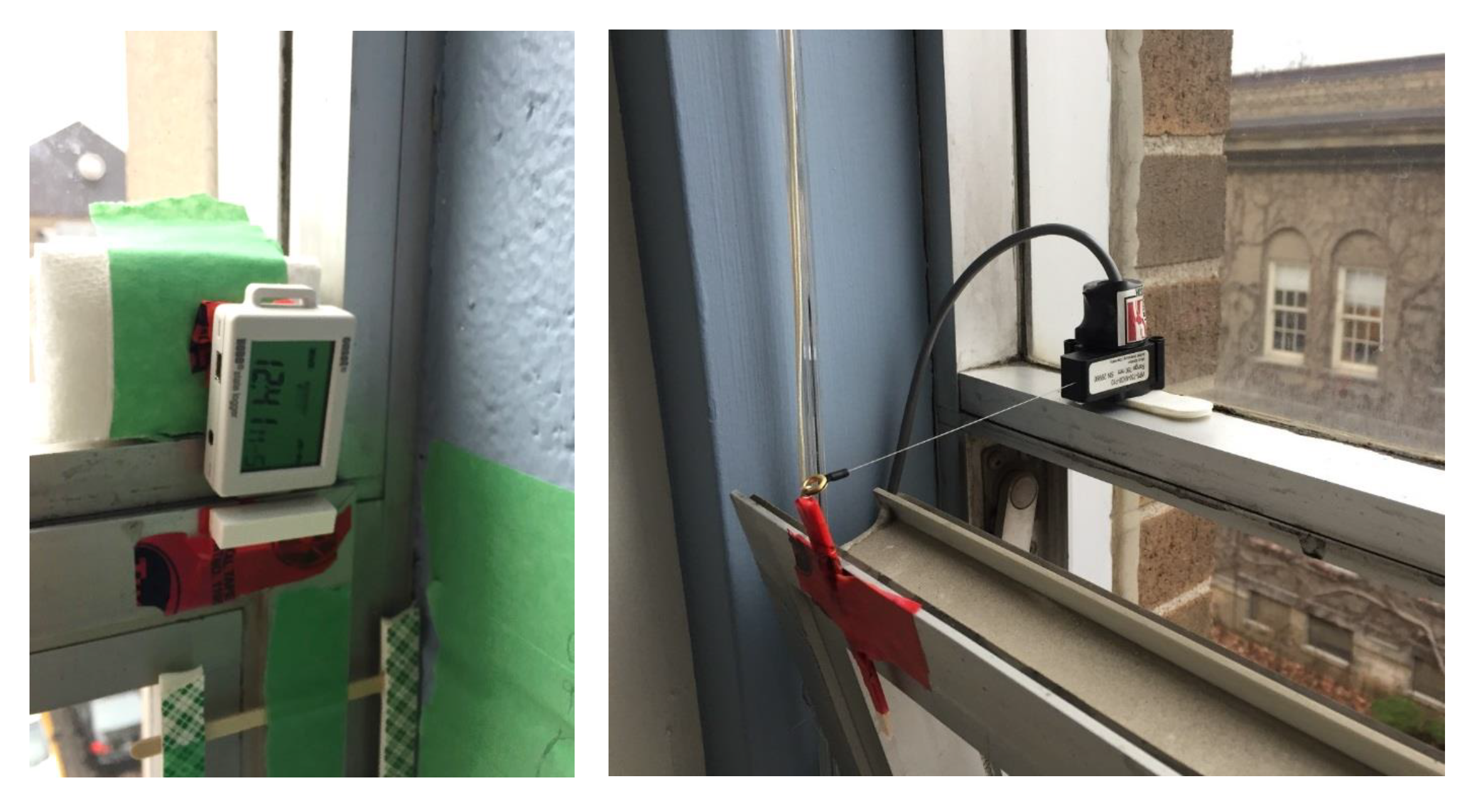Improving the Characterization of Infiltration and Natural Ventilation Parameters in Whole-Building Energy Models of Multi-Unit Residential Buildings
This project investigated strategies to reduce parameter uncertainty for infiltration and natural ventilation model inputs in whole-building energy models of MURBs.
Status: Completed
Research themes: Energy and GHG emissions
Research areas: Solutions for air leakage, ventilation and filtration; Enclosure and building materials performance characterization
Project Objective
This project investigated strategies to reduce parameter uncertainty for infiltration and natural ventilation model inputs in whole-building energy models of MURBs.
Approach
Air leakage testing was conducted to determine the component infiltration rate of windows and window-wall interfaces so that a component-weighted rather than bulk infiltration rate could be used to reduce parameter uncertainty in energy modeling. A pilot study to test various sensors for window operation monitoring was also conducted. An accelerometer, state logger and string potentiometer were tested on both a sliding window and a tilting window.
Findings
Using a component-weighted infiltration rate allowed for the incorporation of building-specific measurements, which helped to reduce parameter uncertainty in the energy model. The discretization of the infiltration rate would help during the modeling of energy retrofits that specifically target building infiltration, by setting bounds on the maximum improvement that could be expected.
For the window operation monitoring, the accelerometer proved useful for measuring state and the extent of window opening area (OA) for tilting windows; the state logger was deemed appropriate for measuring state in both tilt and sliding windows; while the string potentiometer was useful for measuring state and OA in sliding windows. Implementing a window monitoring initiative, even for a short-term duration, would provide useful information in describing window operation patterns and schedules. In turn, this information could be used to inform model calibration.
Ideally, these procedures and protocols can be adapted to industry to aid in the development of whole-building energy models for MURBs.
Publications
Journal Publications
Lozinsky, C., Touchie, M.F. “Improving energy model calibration of multi-unit residential buildings through component air infiltration testing,” Building and Environment 134 (2018) pp. 218-229 doi: 10.1016/j.buildenv.2018.02.040
Conference Publications
Lozinsky, C., Touchie, M.F., “Improving the Characterization of Infiltration Parameters in Whole-Building Energy Models Using Component Infiltration Rate Testing,” in eSim 2018 Building Simulation Conference Proceedings, pp.357-366, Montreal, Quebec, 9-10 May 2018
Lozinsky, C., Touchie, M.F., “The Limitations of Multi-Zone Infiltration Algorithms in Whole Building Energy Simulation Engines,” in eSim 2018 Building Simulation Conference Proceedings, pp.367-374, Montreal, Quebec, 9-10 May 2018



